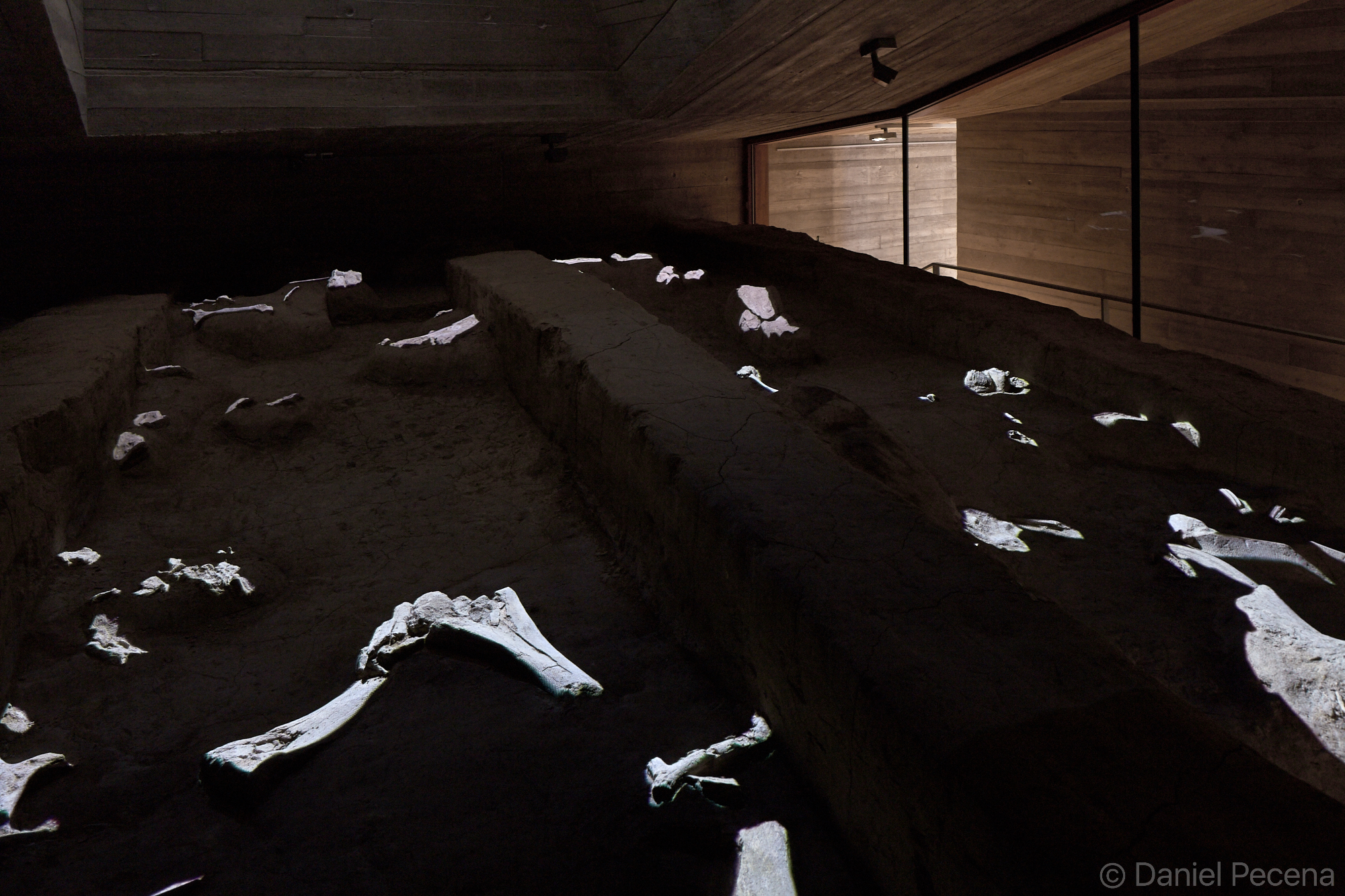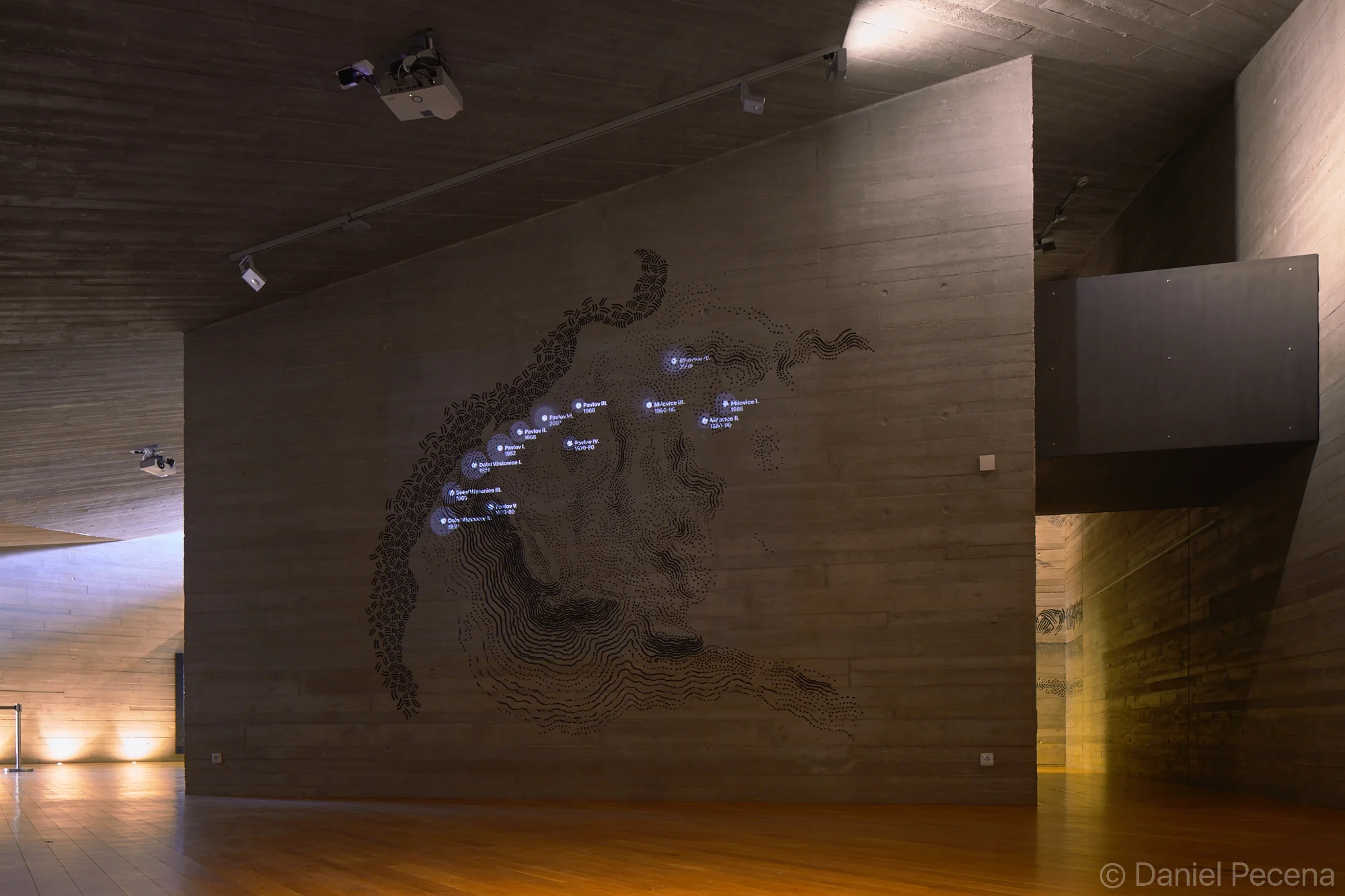The landscape of Pálava hills is rich in archaeological finds dating to 30 000 BCE. During extensive excavations in region of South Moravia archaeologists unearthed number of Paleolithic settlements as well as great amount of stone and bone tools, artworks, skeletal remains of old stone age humans and animals including mammoths.
Initial idea for a museum was conceived in 2003 and it took further 13 years to design and build this subterranean exhibition space. The concept of underground structure was considered due to number of reasons. The Institute of Archaeology CAS (museum’s commissioning body) wanted to display certain finds in their original context post-excavation. And another reason was that the location chosen for the museum was within protected landscape area.
The museum was designed by architectural studio Radko Kvet and the exhibition combines traditional display with the latest AV technology. The exhibits on show include copy of the most famous find called Venus of Dolní Věstonice (the priceless original is housed in Moravské zemské muzeum in Brno). This small ceramic statuette of a woman was found in nearby village of Dolní Věstonice and has recently been dated to circa 29 000 years BCE. Unlike similar figurines made from mammoth’s ivory found in France, Italy or Russia this one is made from fired clay and therefore significant in broad cultural and technological sense.
The museum building has won number of architectural prizes and its design connects this landscape to our prehistoric ancestors deeper in time.







